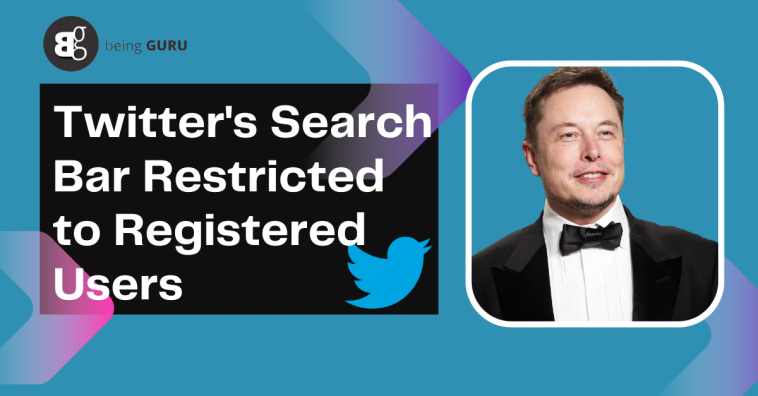Twitter has recently made a significant change to its platform by eliminating the search feature for individuals who are not logged into their accounts. This modification requires users to log in to their existing accounts or create new ones in order to access the site’s search results. It appears that this move is yet another strategy by CEO Elon Musk to drive up the number of users on the platform.
Introduction
Social media giant Twitter has undergone a change in its search functionality, making it exclusive to logged-in users. In this article, we will explore the implications of this alteration and delve into the motivations behind it.
Twitter’s Elimination of Search Feature for Non-Logged-in Users
Previously, anyone could freely access Twitter’s search feed without having to log in to an account. However, with the platform’s new setup, visitors can only scroll through the Explore tab if they are not signed in. The search bar is now nowhere to be found, and the Explore tab only displays a curated list of tweets.
This change has limited the accessibility of search functionality to logged-in users, creating a barrier for those who prefer to remain anonymous or do not wish to create an account. It has sparked curiosity about Elon Musk’s intentions and his influence on this decision.
Changes in Twitter’s Setup
Under the new arrangement, the Explore tab has become the primary avenue for non-logged-in users to engage with Twitter content. It presents a curated selection of tweets, but users are unable to perform specific searches.Despite the fact that the option to search reappears when a user clicks on a tweet, any attempt to enter text redirects the user to the login screen.
The absence of the search bar is a notable departure from the previous design, where it was readily accessible to all users. Twitter’s focus has shifted towards providing a curated experience through the Explore tab, potentially limiting the breadth of content that non-logged-in users can discover.
Lack of Explanation Regarding Explore Feed Curation
While Twitter has not provided explicit details about how the Explore feed is curated, the current implementation displays immediate video content, including former Fox News host Tucker Carlson, an abundance of ESPN coverage, and posts from Elon Musk himself.
The lack of transparency concerning the curation process raises questions about the selection criteria and potential biases within the Explore feed. Without a clear understanding of the algorithmic or manual curation methods, users may question the reliability and impartiality of the content presented to them.
Influence of Elon Musk
Elon Musk, the high-profile CEO of companies such as Tesla and SpaceX, has had a significant impact on Twitter’s recent developments. Last month, he implemented a new payment tier for API access, enabling Twitter to monetize its platform further. Additionally, Musk recently revoked blue checkmarks from most verified accounts unless users subscribe to the Twitter Blue service, which costs $8 per month.
These initiatives indicate Musk’s determination to generate more revenue for Twitter and potentially increase user engagement. However, despite these efforts, Twitter continues to face challenges such as frequent outages, bugs, and security breaches.
Revenue Generation Efforts and Declining Results
While Elon Musk’s strategies aim to boost Twitter’s revenue, the platform’s results have been disappointing. The implementation of new payment tiers and the removal of blue checkmarks have faced backlash from users and media companies. Many users have taken a step back from Twitter or even chosen to log off the site entirely, resulting in a decline in advertising revenue.
The frequent outages, bugs, and security breaches that Twitter has experienced further contribute to the platform’s diminishing appeal. Users are not only irritated by these issues, but they also raise questions regarding the security and dependability of the platform. As a result, advertisers may be reluctant to invest in Twitter, reducing its potential for revenue.
The Decline in Twitter’s Value and Elon Musk’s Purchase In October, Musk bought Twitter for a staggering $44 billion. Notwithstanding, from that point forward, the stage’s worth has allegedly dropped to an expected $20 billion. The significance of Musk’s decision to acquire Twitter has been the subject of speculation as a result of this significant decline in value.
Musk has acknowledged that he paid significantly more for Twitter than its current estimated value when he bought it. Investors and industry observers are curious about Musk’s long-term plans for the platform because the reasons for this purchase, which appears to have been overpriced, are still unknown.






